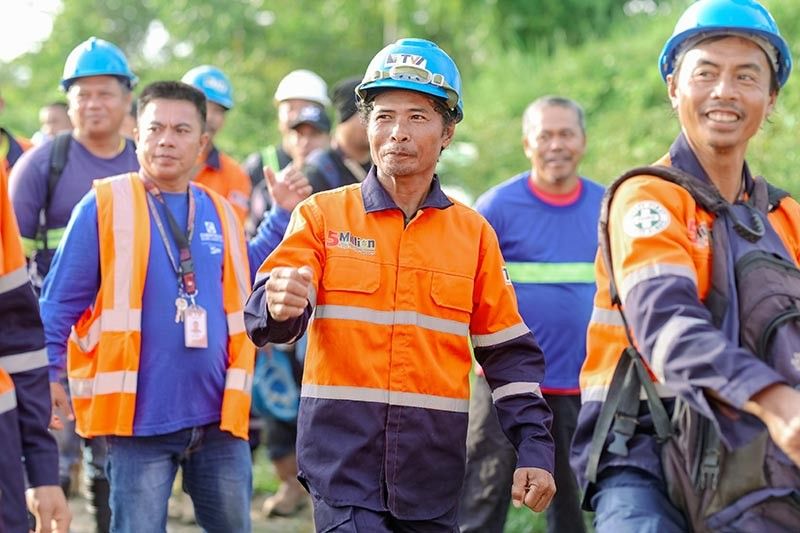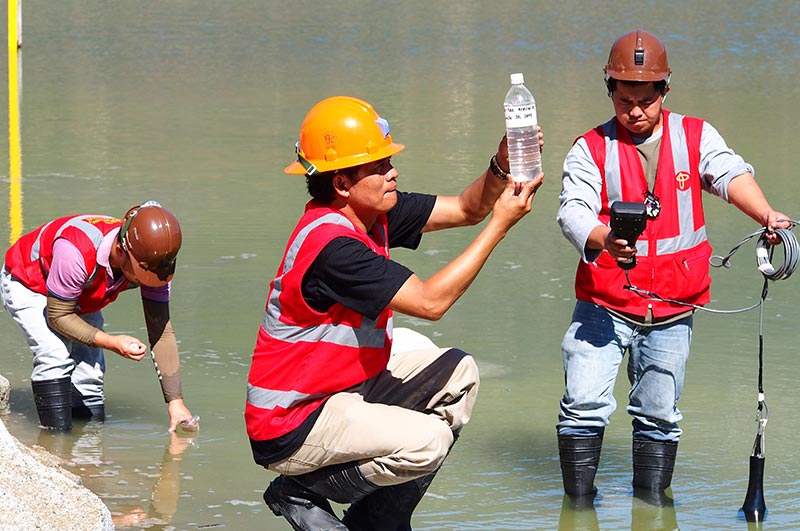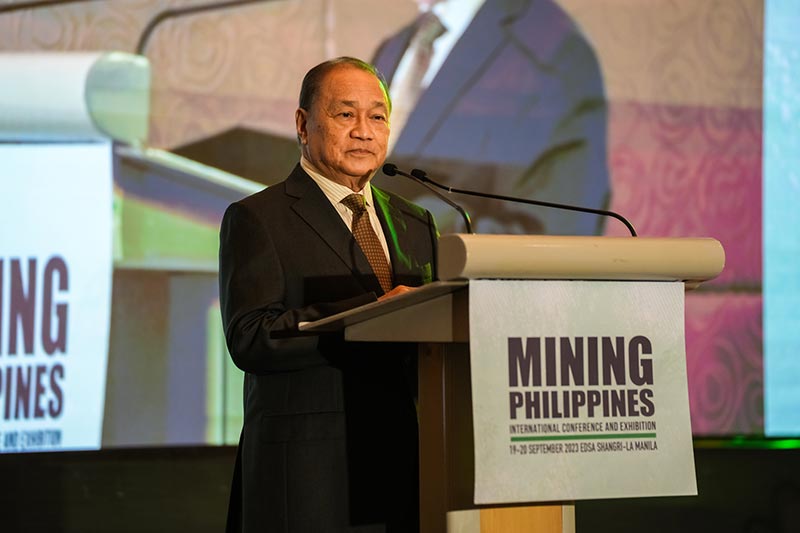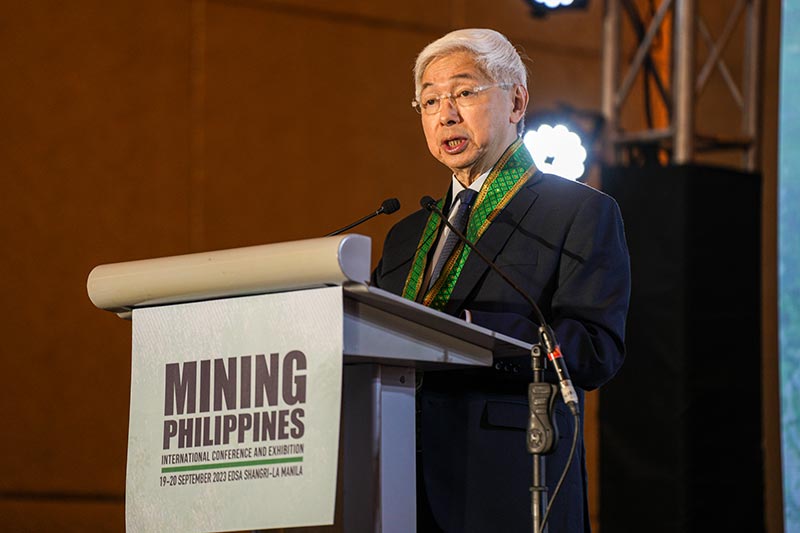Mining in the modern age

MANILA, Philippines — Achieving a modern life without mining would be an incredibly challenging task. Think about the technological advances and conveniences of modern life that you are enjoying right now.
These are all made possible by the metals and minerals produced through mining: the cement for the house that you live in, road networks and other public infrastructure; copper and nickel for transport technologies; and believe it or not, gold isn’t only for jewelry, it also powers up your cellphones and laptops.
Mineral development would even play a bigger role now that the world is transitioning to newer, more efficient and cleaner technologies.
More than the usual products that we see and use in our daily lives, minerals and metals are critical components of many life-saving devices and medications. Gold, for example, is essential to medical equipment such as pacemakers, CAT scan devices and electrocardiograms, and is used as a radioactive metal in radiology.
Mining dates back to prehistoric times when people mined for tools and weapons. Mining is as equally important for our ancestors back then as it is for us today.
The modern world without mining would be catastrophic. It is the starting point of an important value chain that many of us depend on—from engineers working at the mine site to the consumer who needs a particular product.
But what is often overlooked, particularly in our country are the contributions of the industry to society and the economy.
Social development and management program
One of the major mechanisms that allow mining companies to make substantial contributions, especially to the communities where they are present, is through their Social Development and Management Program (SDMP).
An SDMP is a comprehensive five-year plan designed to improve the living standards of host and neighboring communities. As mandated by the Philippine Mining Act of 1995 (RA 7942), mining contractors and permit holders are required to allocate 1.5% of operating expenses to the SDMP.
Of the amount, 75% will be allocated to community development programs; 15% to mining technology and geosciences advancement programs; and 10% to information, education and communication programs.
From 2002 to 2027, the total approved SDMP commitment reached P31.8 billion, with P20.1 billion allotted for 2002-2023. SDMP activities generally have five focus areas: livelihood programs, educational support, health and medical assistance, public infrastructure, and sociocultural and religious support.
Since 2002, SDMPs by mining companies have benefited more than 19 million beneficiaries.
Health-related initiatives alone have recorded more than 6.4 million beneficiaries through various activities such as the provision of healthcare facilities, medical devices and supplies and medicines; construction or renovation of health centers and buildings, birthing clinics and comfort rooms; and the conduct of medical and dental missions, among others.
Early in the year, in the town of Bataraza in Palawan, 325 locals qualified to undergo major and minor surgical operations as the town’s surgical mission entered its 20th year.
Through the combined efforts of Rio Tuba Nickel Mining Corporation (RTNMC) and Coral Bay Nickel Corporation (CBNC), the initiative provides free surgical operation to selected patients yearly.
Rey Alojado was one of the many who underwent the free medical procedure. He said, “This little flesh on my head, I’ve had it for a few months. I don't even know what it's called, I want it removed because sometimes it hurts so much. This is such a big help because I don’t have to pay for it.”
SDMP infrastructure projects, on the other hand, have reached more than 4.7 million beneficiaries. Initiatives under this focus area include electrification programs, construction or improvement of water systems, concreting of roads and pathways, and the building of farm-to-market roads.
Through SDMPs, mining companies partner with local governments to address gaps in physical and social infrastructure in the communities where they are present. As SDMP initiatives are formulated through consultations with the communities themselves, these can address the latter’s needs with impactful solutions that will benefit residents both in the short term and long term.
In Barangay Guinabon in the town of Sta. Cruz, Zambales, Eramen Minerals Inc. provided funding for a communal canal and box culvert as part of their assistance to infrastructure development.
This project now supplies water to more than 100 hectares of farmland, benefitting the farmers who rely on irrigation for their produce.
Diosdado Alota, a resident expressed his gratitude by saying, “This project greatly helped our farmers because it will not allow water to overflow, which will also mitigate flooding in Guinabon. Thanks to EMI, it will now divert water for farming purposes.”
Job generation and security

Statistics from the Mines and Geosciences Bureau (MGB) showed that the mining industry generated jobs from an estimated 184,000 in 2020 to 208,000 by the end of 2022, which showed that the sector was the least affected during the pandemic when widespread mobility restrictions were imposed across various sectors.
As of September 2023, a report by data curator CEIC showed that the Mining and Quarrying sector employed 245,000, which is a significant increase from the 169,000 persons employed the previous month.
CEIC data is updated monthly noting an average of 196,000 persons employed per month from January 2021 to September 2023. The same data showed that job generation in the mining sector reached an all-time high of 338,000 in June 2022 and a record low of 122,000 in May 2021.
Many mining companies responded early to the pandemic enabling them to not only mitigate the risks of infection in and around the mines but also ensure the well-being of their employees.
According to Jordan Zamuco, a company driver at Philex Mining Corp.’s Padcal Operations in Tuba, Benguet: “We were on on-call duty since there were company volunteer programs where our assistance to transport donations to our host and neighboring communities was needed. After 15 days, we were back on track; our work has been continuous since. There were instances when the skeleton workforce arrangement was necessary in our department but we were well compensated. We received our daily salary. What I am most thankful for are the continued benefits from the company that we received without delay.”
None of Philex Padcal Mine’s nearly 1,900 employees—the majority of whom are from the Cordillera Administrative Region (CAR), which posted a 25% unemployment rate at the start of the pandemic—were separated since the start of the pandemic. Same with the company’s corporate offices in Mandaluyong.
Benguet Corporation (BC), for its part, managed to secure the jobs of 1,433 employees in the company’s head office and various projects. The company’s subsidiary, Benguet Corp Nickel Mines Inc. (BNMI) greatly contributed to the increase of employment in Sta. Cruz, Zambales when it resumed its operations during the pandemic.
Since October 2020, BNMI contracted more than 700 employees for its nickel mining operation.
“Hearing news of unemployment in the country and closing down of many businesses in different industries, makes me realize to be grateful that I still have a secured job I can count on during these trying times to provide for my family,” says Mark Gallo, a human resource assistant at BC.
Opportunities for the country
In the Philippine setting, mining plays a crucial role in the economy, employing hundreds of thousands of people both directly and indirectly, and supporting many of the country’s largest industries.
Given its centrality, it is imperative that mining in the country is done in such a way that minimizes its potential environmental and social impacts. Both the government and private sector have already made commitments to promote responsible mining, an approach that is conscious of the environmental impact that mining industries may have.

Philex Mining Corporation chairperson Manuel Pangilinan made a commitment during the 2023 Mining Philippines International Conference and Exhibition, saying it is important for the mining sector stakeholders in the Philippines to promote sustainability through the development of green technologies.
Pangilinan’s Philex Mining Corporation produces copper concentrates, containing copper, gold and silver. Pangilinan urged the mining industry in the Philippines to commit to a serious stance in pursuing green mining as the sector contributes largely to the fight against poverty in the country.
He said that despite the inherent risks of mining, if done responsibly, it can provide the much-needed boost to the economy and enable technology that allows the world to transition from fossil fuels to the more sustainable renewable energy.
“In many respects, sustainability rests on green technology—and by extension, reliance on mining would continue,” Pangilinan said.

On the same note, Department of Trade and Industry (DTI) Secretary Alfredo Pascual likewise underscored the importance of mining to the country’s economic growth stressing that the government is pushing to promote the development of the green metals sector.
He said there is a tremendous opportunity to use the extractive industry’s potential to propel long-term economic growth, saying “Philippine companies have several opportunities in mining and mineral processing.”
The trade sector underpinned the huge contribution of the mining industry to spur regional economic growth, generate employment in local communities, and become a major revenue source for the government through the taxes paid by mining companies.
Transitioning towards a green future requires more mining because, as mentioned earlier, new technologies require key metals and minerals. A balancing act is a must while leveraging the abundance of mineral resources in the Philippines through responsible or green mining practices to enhance the country’s economic development while ensuring the preservation of the environment.
As Pangilinan aptly remarked, “Mining is not the enemy; poverty is.” This underscores the importance of striking a balance between economic growth and environmental sustainability, emphasizing the need for conscientious mining practices that prioritize both prosperity and the well-being of the modern ecosystem.
Economic contribution
The Philippines is one of the richest in the world in terms of mineral resources. It is estimated to have about P55 trillion worth of untapped mineral reserves such as gold, silver, copper and zinc but only 5% of these reserves have been explored while only 3% are covered by mining contracts.
Globally, the Philippines ranks third in gold, fourth in copper, fifth in nickel and sixth in chromite deposits. However, the mining industry’s economic contribution to the country’s Gross Domestic Product (GDP) has remained modest over the years, compared to other key economic drivers such as agriculture, manufacturing and services, owing to the past administrations’ resistance to mining.
The present administration of Ferdinand Marcos Jr. sees the potential of the mining sector as a key driver to help the Philippines recover from the pandemic and is, therefore, prioritizing the revitalization of the mining sector.
Metal production increased almost 32% in 2022 compared to the year before, while the total export value for 2020–2022 was P1.034 trillion ($18.7 billion), or 8.51% of the country’s total exports.
The administration, however, wants mining in the Philippines to adhere to responsible and sustainable mining practices, striking a balance between protecting the environment, benefiting local communities and supporting the government’s socioeconomic agenda. Moreover, it is also keen on rehabilitating mined-out areas and undertaking progressive rehabilitation.
To date, there are 56 operating metallic mines and seven processing plants or smelters in the Philippines. The MGB predicts there could be another 190 mining projects in the next four years. — EHDA MAUSISA DAGOOC
Editor's Note: This article is sponsored by the National Unified Information Education Communication Program, initiated by the Mines and Geosciences Bureau and being implemented by six metallic and non-metallic industry associations.
- Latest


















